From the end of the 14c to the conclusion of the 16c, the fencing community witnessed an explosion of handwritten fight books or fechtbucher. The few who studied the available manuscripts studied these from three orientations:
The dissertation contains 358 pages of text with an appendix that includes charts and illustration extract from various fechtbuchs. The following table contains links to the beginning of each chapter in the dissertaion, along with an English translation of the introductory paragraph for each chapter for reference.
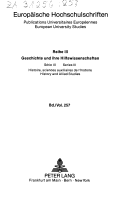 |
INHALTSVERZEICHNIS, VORWORT
Table of Contents and Preface: The beginning part of the dissertation which contains the table of contents and preface which occupies the first 20 pages. |
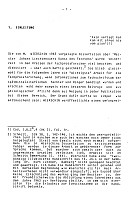 |
1.0 Pages 1-16: Einleitung
Introduction:
M. Wierschin's 1965 thesis regarding Master Johann Liechtenauer's "Art of Fencing" was considered revolutionary in its time and inspired much discussion in research circles, some of it quite heated. Nonetheless, this work remained the "most important" work available for the research into late medieval fencing and wrestling, being cited often in every paper in this field, often for lack of better sources and from a sense of linguistic obligation. The reasons for this might be so simple as to be deceiving: Wierschin published an extensive calatog of fencing manuscripts and no other comparable or equivalent work existed for comparison. The fact that H. Helwig's 1966 publication outlined a bibliography of additional German fechtbuchs remained unknown, and it was therefore unused. Earlier efforts with the late medieval fencing manuscripts had, however, been much in use in earlier times, partly from interest in "Ancient Teutonic Rights and Practices", their "Strangenesses" and their Practicalities. A decline caused by the loss of Political outspokenness on all subjects German resulted in private efforts to address the subject of the duel to a not inconsiderable level, in addition to its linguistic tendency, which had support both from sports fencing programs in the universities and from efforts to assert itself slowly and indignantly from national pride and national literature. |
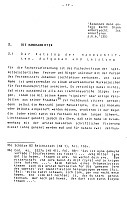 |
2.0 Pages 17-142: Die Handschriften
The Manuscripts
2.1 The Catalog of Manuscripts, Distribution and Achievement
For the literary researcher, the nonfiction literature of late Medieval fencers and fighters is firmly and inseparably connected to the person of Fencing Master Johannes Liechtenauer, and his name is, to an extent, advanced as an unmistakable trademark among fencing manuscripts. It's striking to note the fact that, without exception, all fencing manuscripts carry the Liechtenauer stigma in that they all associate with his name and often quote his verses regarding the fencing arts in their preambles. Upon further delving, all manuscripts, even those which must be called Anonymous or Uncredited, are seen to follow his rules and ordering of fencing with the longsword. Liechtenauer earned thus the honour of his name being associated with the first known manuscript based teachings and being a recognised mark of fencing quality for nearly two centuries afterward. |
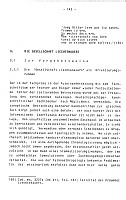 |
Young Knight learn
To love God and Women
Thus advance yourself
unto Knightlyhood and learn
You need sieze the Art
And in battle be hopeful
3.0 Pages 143-206: Die Gesellschaft Liechtenauers
The Liechtenauer Society
3.1 An Introduction
3.1.1 The "Liechtenauer Society" as an Orientation Framework
The error in isolating the view of nonfiction literature regarding fencing and fighting and the research thereof can be seen in the probably avoidable difficulties in maintaining a comprehensive catalog of German language fencing manuscripts. However, a complete view of many manuscripts from the same period can introduce a new problem: in short order the reader is so flooded with information that sorting and ordering become nearly impossible. |
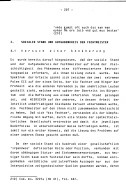 |
often under blows must one man
be one with one's body, and well must stand
4.0 Pages 207-250: Sozialer Stand und Aufgabenkreis der Fechtmeister
4. Social Standing and Responsibilities of the Fencing Master:4.1 Seeking an Approximation
It's becoming evident that understanding the social status and responsibilities of the Fencing Master requires a wider view, due to the multifaceted nature of the phenomenon, than we've given it so far. The spectrum of opinions ranges between two extremes, with Eis at the one end with his views that early fencers and fighters were seen as people without honour, to Wierschin at the other extreme, with his long running attempt to elevate the Fencing Master to levels approaching that of aristocracy. |
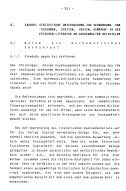 |
5.0 Pages 251-268: Exkurs: Statistische Untersuchung zur Verwendung von 'schirmen, striten, vehten, kemphen' in der epischen Literatur an ausgewählten Beispielen
Sideline: Statistical investigations into the use of "Skirmish, Strife, Challenge, Fight" via Epic Literature's examples of violence:5.1 Why a mathemetical procedure?
5.1.1 Objections against the procedure.
The Philologian, who pays special attention to the meaning of the available material, may get a bad feeling about the working procedure proposed here. A Mathematical-Statistical analysis of Literature - must that not be the wrong procedure for the wrong object? |
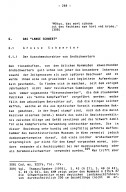 |
6.0 Pages 269-286: Das "lange Schwert"
The Longsword:6.1 Great Swords
6.1.1 The Exceptional Characteristics of Great Swords
The special attention given to these immensely large swords, which deviated from the normal standard mass, was bestowed by both contemporaries and later admirers, and because of this great zeal an accompanying attentiveness was always given. Thus we find that since the last century no one has revised their collections and still generally present these "Giant Swords" as "Genuine Combat Weapons" to an astonished public: and the untrained eye does not notice that the blade of these weapons, which to them seem to come from a mythical past, are usually blunt, and the resulting great weight of the iron destroys the subtle balance between blade and haft, rendering them useless for any actual combat use. |
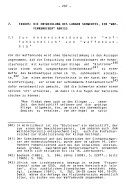 |
7.0 Pages 287-300: Exkurs: Die Entwicklung des langen Schwertes, ein "waffenkundiger" Abriß
Sideline: The Development of the Long Sword, a "Weapon Buyer's" Outline.7.1 To Distinguish between "Weapon Use" and "Weapon Usefulness"
Only from viewing weapons, not writing, can one make this statement, that the long dominant single handed swords, with their shorter stouter blades and "blood gutters" (fullers) attained stronger more practical shearing guards until, in the 13th century, they had developed into two handed weapons. To move onto the progress of the art of armoured combat, we see a corresponding development in the rise of plate armour, the answer to which was the Sword now had a pointy tip which could be stuck between the joins of the plate Harness.: "One does not find also at the blade... that time the hollow grinding more rarely and the gratige blade generally, those, in order an excessive weight too received, from the fishing rod pointedly approaches." Boeheim (1890), S.246. Vgl. dazu Forrer, ZhWK 2, s.50 (Gotisches Stoßschwert von Mainz) sowie Boeheim, S. 249f. über 'perswert' genannte Waffen dieses Typs. |
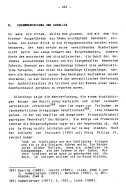 |
8.0 Pages 301-312: Zusammenfassung und Ausblick
Putting it Together and Looking AheadIt is a mistake, whatever one wishes to believe, to think that the subject has been exhaustively dealt with up till now. A short look into the character of combat will give us a better view. The nobility did not undergo their destructive defeats only through the use of the Long Sword in the hands of professional fighting citizens, but through their massed discipline. The application of the Gentry's favoured hilted weapons merely reinforced the foot soldier. The two handed sword was in any case a practical military development, but not because of its excessive blade length, but from the specialty of their two handed nature which gave them their special character. Looking back, the late medieval military establishment quickly siezed onto the longsword and the blossoming of the two handed fencing arts thus came about. |
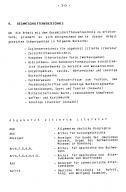 |
9.0 Pages 313-344: Gesamtschriftenverzeichnis
Total writing directoryAn impressive bibliography containing citations of historical treatises as well as contemporary sources. |
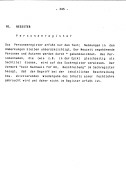 |
10.0 Pages 345-355: Register
RegistersA comprehensive index listing followed by appendixes containing tables and charts describing Hils analysis and results of the fechtbuchers studied. The appendix also contains sample illustrations taken from a number of historical treatises examined. |
Translation of the introductory paragraphs per chapter was done by Michael Rasmusson. For queries on the translated introductory paragraphs of Dr. Hils's dissertation, contact or for general questions regarding Dr. Hils' dissertation, contact
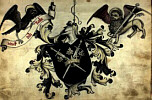 Note: Permission to publish the manuscript online on the AEMMA's online library was graciously granted by Dr. Hans-Peter Hils. The images are available for scientific and academic research purposes only and remain the property of Dr. Hans-Peter Hils. Any desire to publish this material elsewhere or for profit must be pre-approved by Dr. Hils.
Note: Permission to publish the manuscript online on the AEMMA's online library was graciously granted by Dr. Hans-Peter Hils. The images are available for scientific and academic research purposes only and remain the property of Dr. Hans-Peter Hils. Any desire to publish this material elsewhere or for profit must be pre-approved by Dr. Hils. 









